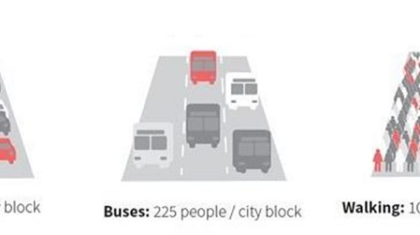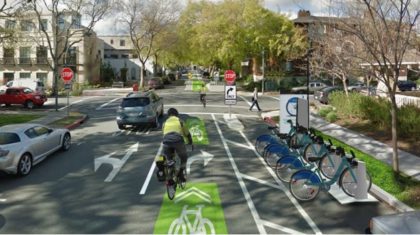
by Nick Falbo, Former Planner at Alta Planning + Design
It feels like we’re in a golden age of bikeway design and engineering with the constantly evolving NACTO Urban Bikeway Design Guide, the People for Bikes Green Lane Project, the recent FHWA approval of bicycle signal heads and the new protected bike lanes being implemented on streets across the country. But as new and as innovative as all of this seems, it turns out we’ve been here before.
The 1970s had a similar renaissance in bicycling for transportation, and like today, planners, designers and engineers aimed to transform the face of bicycling. In honor of this history, I’ve dug up some examples of past US guidance from 40 years ago that featured the same treatments we are recommending today. The specific guidance and details may differ slightly from what we currently recommend, but the concepts ring just as true today as they did back then.
Design Criteria for Protected Lanes
The Davis Bicycle Circulation and Safety Study in 1972 featured a design criteria chart that sets hard lines on what conditions require various different types of facilities to achieve rider comfort. As simple as this concept is, few agencies have adopted anything as robust as this for defining when one facility is more appropriate than another.

Cycle Tracks & Buffered Bike Lanes
Also from the Davis Study, design drawings of both parking protected cycle tracks and paint-only buffered bike lanes are featured as “Typical” bike facilities. It would take 35 years before such designs would be considered typical anywhere else.

Two-Stage Turn Box
Formalizing two stage turns are a necessary part of designing protected bike lanes. The Institute of Transportation and Traffic Engineering (now ITE) Bikeway Planning Criteria and Guidelines from 1972 recognized this, and provided diagrams for what they refer to as a “Queue Pocket,” based on Swedish designs.

Protected Intersections
While the concept of a dutch-style protected intersection is still more conceptual than real* in the United States, the idea is not new. Both the 1972 ITE Guidelines and the Davis Study saw the potential of setback crossings and refuge island protected turns, and included the European-inspired design as a potential method of addressing protected bike lanes at intersections.
*update — protected intersections in the US

Dig through these historic documents yourself and let us know if you find any other intriguing tidbits from the dreams of the 1970s:


